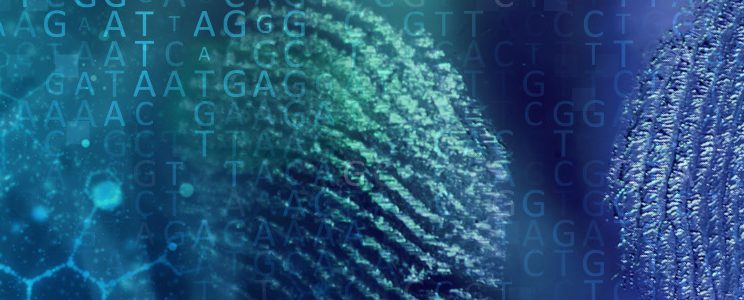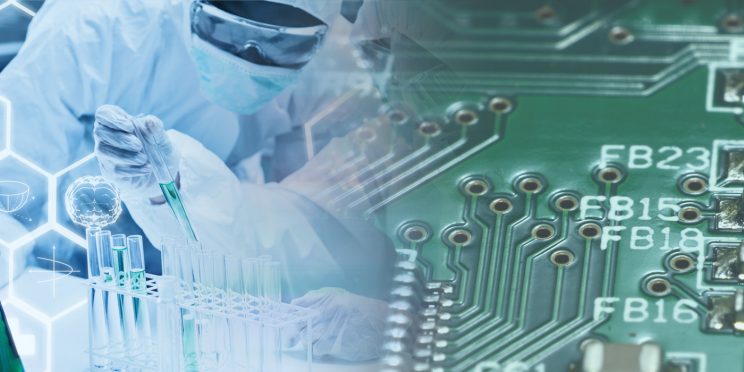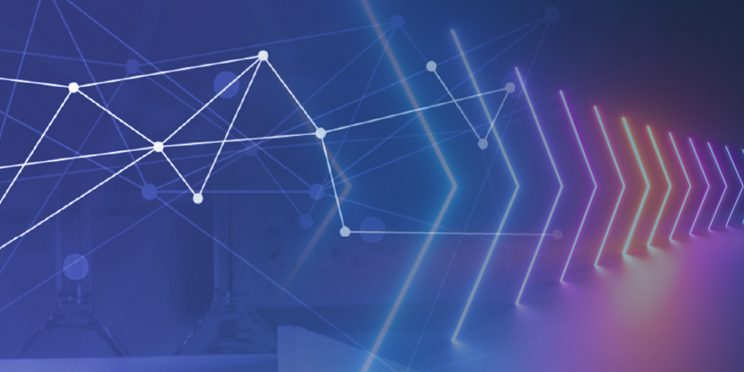Overview

The National Institute of Justice (NIJ) and the Forensic Technology Center of Excellence (FTCOE) delivered a four-session Virtual Workshop Series: 3D Firearm Imaging from August 21 to September 11, 2024. Throughout this workshop series, attendees heard from a range of presenters and subject matter experts, including Alan Zheng (National Institute of Standards and Technology), Rachael Gominsky (Federal Bureau of Investigation), Todd Weller (Weller Forensics), Erich Smith (Federal Bureau of Investigation), Alexander Luby (Unified Forensic Laboratory), and Raymond Valerio (Queens County District Attorney’s Office). This series is intended for firearm examiners or soon-to-be firearm examiners working in laboratories that have recently adopted 3D Firearm Imaging or are considering its adoption soon.
3D Firearm Imaging is a powerful new analytical technique that is becoming more commonplace with forensic science service providers (FSSPs) due to its ability to enhance the accuracy and reliability of ballistic evidence analysis. Despite these advantages, 3D Firearm Imaging remains underutilized because of the high costs associated with the technology, the need for specialized training, and the inertia of transitioning from traditional methods. This comprehensive workshop series aims to provide forensic practitioners with a greater understanding of the intricacies of 3D Firearm Imaging. Spanning several sessions, participants will delve into a range of critical topics, each carefully designed to enhance their expertise and proficiency in this specialized field.
In the first session, participants will be introduced to the fundamentals of firearm imaging, becoming familiar with cutting-edge instrumentation essential for the task. Attendees will understand the features and capabilities of scanning technologies and how they capture and process images of firearms and ballistic evidence with both precision and accuracy. They will gain insight into the principles of optics, digital imaging, and image processing, understanding how these concepts are applied in forensic science practices. Moreover, participants will explore the application of control charts as a powerful tool for monitoring and maintaining the quality of imaging processes over time. This ensures consistency and reliability in forensic casework, thereby enhancing the credibility and integrity of investigative outcomes.
Building upon this foundation, the workshop series will further explore the establishment and adherence to industry best practices and standards. Through practical examples, participants will understand the importance of consistency, accuracy, and attention to detail in firearm imaging. This session will provide an overview of validation with a focus on validating systems designed to measure and compare microscopic toolmarks on fired ammunition. Participants will also be introduced to the latest standards from the Organization of Scientific Area Committees (OSAC) and relevant documents from the 3D2 Technology Working Group (3D2TWG).
Efficiency is paramount in forensic casework, and in session 3 participants will discover strategies to streamline workflows without compromising quality. Attendees will learn about Laboratory integrating Information Management Systems (LIMS) to enhance data management and workflow efficiency. This includes understanding the benefits and challenges of different workflow configurations, gaining insights into selecting the best approach for their specific laboratory needs.
Finally, the workshop series will conclude by preparing participants to effectively communicate their findings in a courtroom setting. From expert testimony techniques to navigating legal considerations and challenges during cross-examination, attendees will emerge equipped with the skills and confidence needed to convey their expertise with clarity and credibility.
Please note that there were a limited number of virtual seats available for participation in this workshop series cohort and the application closed on June 28, 2024. Applications were prioritized based on applicants' ability to attend all four live sessions on August 21st, August 28th, September 4th, and September 11th from 2:00 pm - 3:30 pm ET. Selected participants were notified of their acceptance to attend the workshop. The archived event will be made available regardless of live event attendance.
Workshop Details
What:
Interactive Virtual Workshop Series on 3D Firearm Imaging
Duration:
6 hours
Each session consists of a recorded lecture and discussion, a multiple choice quiz, and suggested readings. A workshop certificate will become available once all session recordings have been viewed and the corresponding quizzes have been completed.
| Session Topics | Session Date | Session Duration |
|---|---|---|
| Session 1 | Introduction to 3D Firearm Microscopy, Instrumentation, and Measurement Practices Xiaoyu Alan Zheng & Rachael Gominsky |
August 21, 2024 | 2:00 - 3:30 PM ET |
| Session 2 | Validation Standards and Technical Working Group for 3D Toolmark Technologies (TWG3D2T) Todd Weller & Xiaoyu Alan Zheng |
August 28, 2024 | 2:00 - 3:30 PM ET |
| Session 3 | Casework Efficiency, LIMS Integration, and Workflow Configurations Alexander Luby & Erich D. Smith |
September 4, 2024 | 2:00 - 3:30 PM ET |
| Session 4 | Testimony and Admissibility Raymond Valerio & Erich D. Smith |
September 11, 2024 | 2:00 - 3:30 PM ET |
Introduction to 3D Firearm Microscopy, Instrumentation, and Measurement Practices
This webinar originally occurred on August 21, 2024
Duration: 1.5 hours
Session 1 Overview
3D Firearms imaging systems are becoming more commonplace in forensic laboratories. While they provide improved imaging and analysis, there are new considerations examiners need to be aware of when using these systems. In this session, attendees will understand the features and capabilities of scanning technologies and how they capture and process images of firearms and ballistic evidence with both precision and accuracy. This session will cover instrument methodologies, limitations of 3D data, and best practices for implementation. Participants will explore the application of control charts as a powerful tool for monitoring and maintaining the quality of imaging processes over time. The topics addressed will help ensure that the data generated are accurate and suitable for toolmark analysis.
Validation Standards and Technical Working Group for 3D Toolmark Technologies (TWG3D2T)
This webinar originally occurred on August 28, 2024
Duration: 1.5 hours
Session 2 Overview
This presentation will provide an overview of validation, focusing on systems designed to measure and compare microscopic toolmarks on fired ammunition (e.g., bullets and cartridge cases). Rather than offering a protocol or step-by-step guide, the talk will instead address practical considerations and metrics to consider for validation. The goal is to make the concept of validation more approachable and less intimidating for participants. Attendees will also be introduced to the latest standards from the Organization of Scientific Area Committees (OSAC) and relevant documents from the Technical Working Group for 3D Toolmark Technologies (TWG3D2).
Casework Efficiency, LIMS Integration, and Workflow Configurations
This webinar originally occurred on September 4, 2024
Duration: 1.5 hours
Session 3 Overview
The Cadre Forensics TopMatch-3D High-Capacity Scanner captures high resolution three-dimensional scans of fired cartridge cases and test fired cartridge cases. This presentation will cover the Unified Forensic Laboratory’s validation of the Cadre Forensics TopMatch-3D High-Capacity Scanner and NIBIN triaging algorithm. This discussion will focus on their use in evaluating and classifying fired cartridge cases and test fired cartridge cases for entry into National Integrated Ballistic Information Network (NIBIN). Additionally, the presentation will explore the practical integration of the Cadre Forensic TopMatch-3D High-Capacity Scanner and NIBIN triaging algorithm for use in NIBIN casework, highlighting best practices, challenges, and solutions.
Testimony and Admissibility
This webinar originally occurred on September 11, 2024
Duration: 1.5 hours
Session 4 Overview
Attendees will gain a comprehensive understanding of the current legal standards governing the admissibility of scientific evidence, with a focus on the challenges that emerging 3D firearm imaging technologies may face. The session will cover key topics such as Federal Rule of Evidence 702, the Daubert and Kumho standards for admissibility, and the methodologies behind Light Comparison Microscopy (LCM) and Virtual Comparison Microscopy (VCM). Discussions will also address the complexities of presenting statistical evidence in the courtroom. Additionally, participants will explore a real-world case flow using virtual comparison for firearms evidence, including insights into the development of this process, how it has been applied, and lessons learned from courtroom testimony.
Related Resources
- FLN-TWG: 3D Imaging for Firearms and Toolmarks
- ASCLD Train the Director – Firearms 3D Technology: Advantages and Value for Implementing 3D Technologies
- Success Story: Advancing 3D Virtual Microscopy for Firearm Forensics
- 3D Toolmark Technologies Technical Working Group
- 2022 Update: 3D Imaging Technologies and Virtual Comparison Microscopy for Firearms Examination, A Landscape Study
- A Close Look at 3D Microscopy for Firearms Identification
- A Unique Approach to a Crime Gun Intelligence Center with the Inclusion and Support of 3D Virtual Comparison Technologies
- 2022 Firearm and Toolmarks Policy and Practice Forum
- Just 3D Optical Topography
- Just Advanced Capabilities in Firearm and Toolmark Analysis
Funding for this Forensic Technology Center of Excellence event was provided by the National Institute of Justice, Office of Justice Programs, U.S. Department of Justice.
These Forensic Technology Center of Excellence workshop live sessions will be hosted using Microsoft Teams. Live sessions will be archived and posted on our website within two weeks of the workshop ending. Archived webinars do not require access to the Teams platform.
The opinions, findings, and conclusions or recommendations expressed in this event are those of the presenter(s) and do not necessarily reflect those of the U.S. Department of Justice.
Contact us at ForensicCOE@rti.org with any questions and subscribe to our newsletter for notifications.




